
Konnogvardeysky Boulevard is one of the streets in the historical center of St. Petersburg.
The boulevard connects Senate Square with the island of New Holland.
The history of this place, as a full-fledged boulevard, dates back to the mid-19th century.
In 1717, the Admiralty Canal was dug, used to float logs from the island of New Holland, where the logs were stored, to the Admiralty Dockyard (now the Admiralty building).
The canal lasted until 1844, when it was enclosed in a pipe and filled in, and in its place the Konnogvardeysky Boulevard was built.
The name Konnogvardeysky Boulevard has been known since 1842 and is associated with the former Konnogvardeysky Manege and the barracks of the Life Guards of the Horse Regiment located on the boulevard.
Today Konnogvardeysky Boulevard is part of the routes in the center of St. Petersburg. Its length is about 700 meters. It connects the very center of St. Petersburg - Senatskaya Square and Alexander Garden with Labor Square and the island of New Holland, which is now a landscaped park with a pond and restored historical buildings, playgrounds, cafes and restaurants, places for recreation and walking.
In the center of Konnogvardeysky Boulevard there is a pedestrian alley with places for recreation. On both sides of the alley there are passing roads with sidewalks, along which buildings, including historical ones, stand in dense rows.

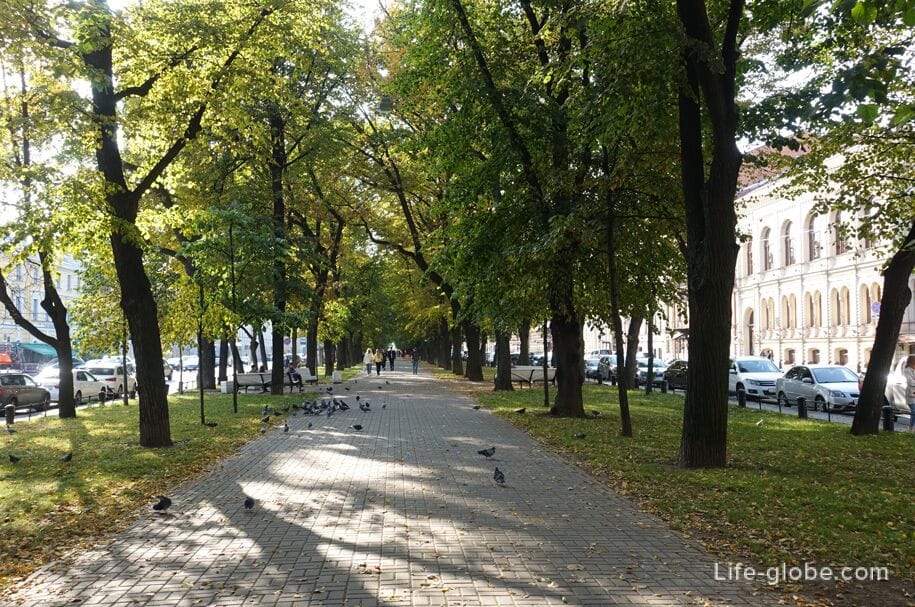
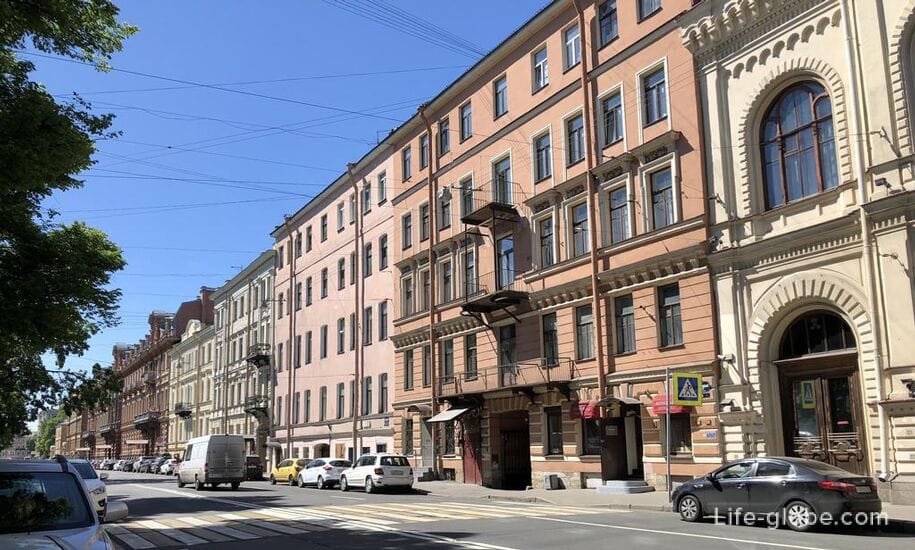
From the side of the Senate Square, Konnogvardeysky Boulevard is marked by two tall columns - "Columns of Glory", crowned with winged statues-sculptures of the goddess of victory Nika.
The statues were a gift from King Frederick William IV of Prussia to Nicholas I. Today, the statues of the goddesses are replicas.
The creators of the columns that serve as pedestals for the statues were the sculptor H. D. Rauch and the architect C. I. Rossi.
The columns were opened in 1845.
The height of the columns is 12 meters, including sculptures-2.5 meters.

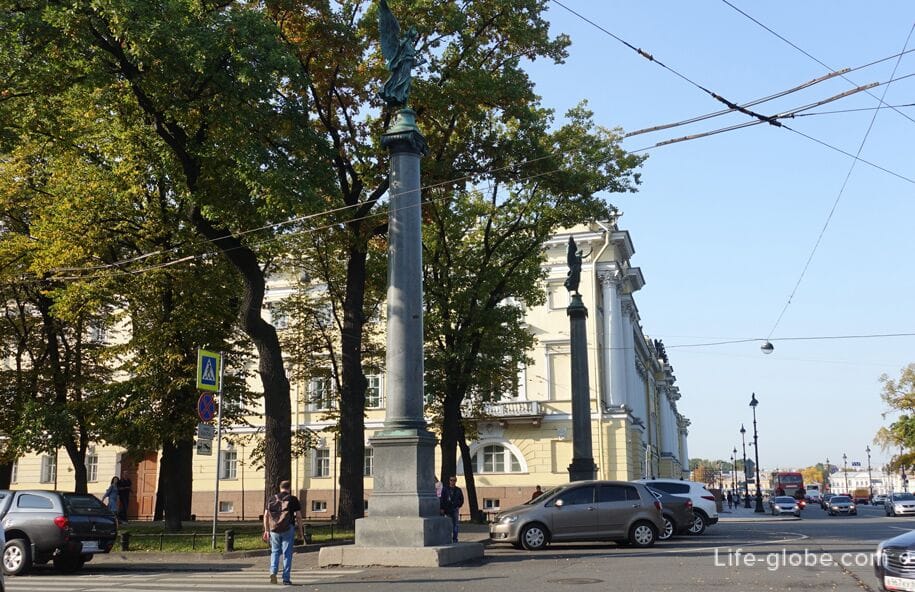
The corner building at number 1 is the former Synod building, built in 1830 under the direction of architect Alexander Staubert and designed by Karl Rossi.
The building of the Synod from the side of the Senate Square is connected by a triumphal arch to the former building of the Senate, founded in 1829.
Today, the buildings of the Senate and the Synod are an architectural monument.
The main divisions of the Constitutional Court of the Russian Federation are located in one wing of the building. In the other (the former building of the Synod) - the Presidential Library named after Boris Yeltsin. Learn more about the Senate and Synod buildings…


On the opposite side from the Synod building, Konnogvardeysky Boulevard adorns the northern facade of the building in the classical style-the formerKonnogvardeysky manege.
The arena was built in 1804-1807 according to the project of Giacomo Quarenghi for winter and summer training, as well as ceremonial horse dressage of the Life Guards Horse Regiment.
During the history of the arena, it was rebuilt several times.
Since 1977, the building has been used as an exhibition hall "Manege".
The two-story building of the arena is decorated with pilasters with an entablature.

The main facade of the arena faces the Senate Square and is decorated with a portico with columns and a triangular pediment.
On both sides of the steps of the arena, on the pedestals there are copies of ancient statues of Dioscuri (in ancient Greek and Roman mythology - the twin brothers Castor and Pollux), taming horses.
The Central Exhibition Hall "Manege" is the largest exhibition space in the center of St. Petersburg. The main activity is the organization of art exhibitions and related events-lectures and master classes, seminars on art and culture, film screenings and concerts.
Website of the exhibition hall "Manege": manege.spb. Address: St. Isaac's Square, 1.
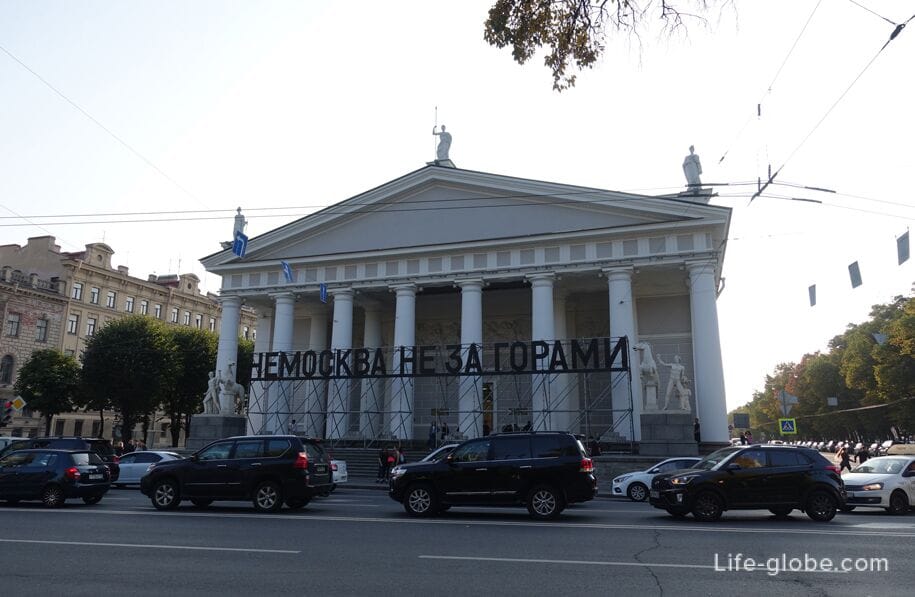
At the address: Konnogvardeysky Boulevard 3, there is an architectural monument-the former house of military engineer S. V. Yafimovich.
The building was erected in the first half of the 19th century and rebuilt in 1870-1873.
The facade of the house is richly decorated with stucco and has three balconies with openwork railings.
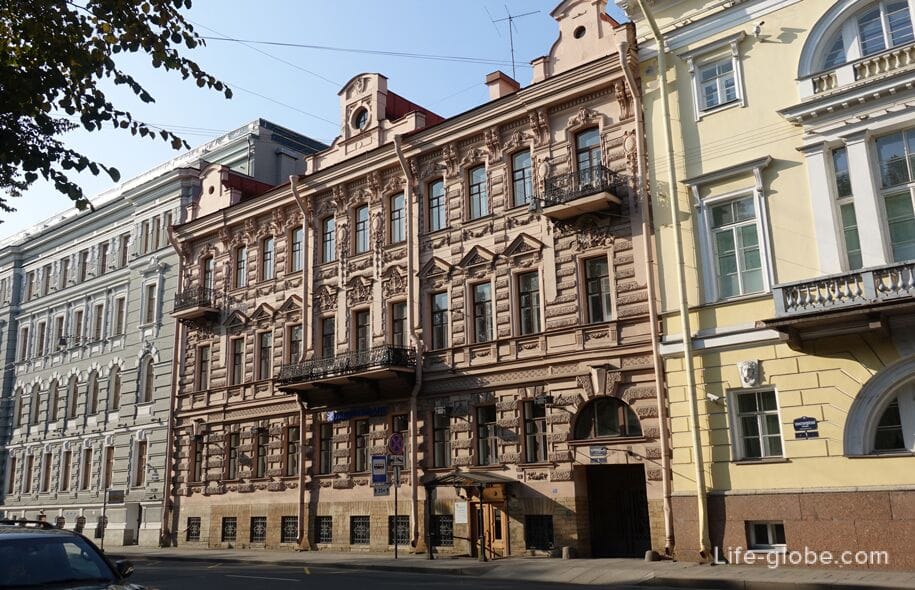
At number 5 is the "house of Montferrand", built in the classical traditions of St. Petersburg architecture and now has preserved the historical facade of the "House of the Clergy" (ministers) St. Isaac's Cathedral, who lived in the house in the 18th century.
Today, the house has residential well-appointed apartments with open terraces and a closed landscaped area.
The house has two facades: one (front) faces Konnogvardeysky Boulevard, the second - on Galernaya Street.
In the house you can stay in an apartment/apartment Montferran Apartment
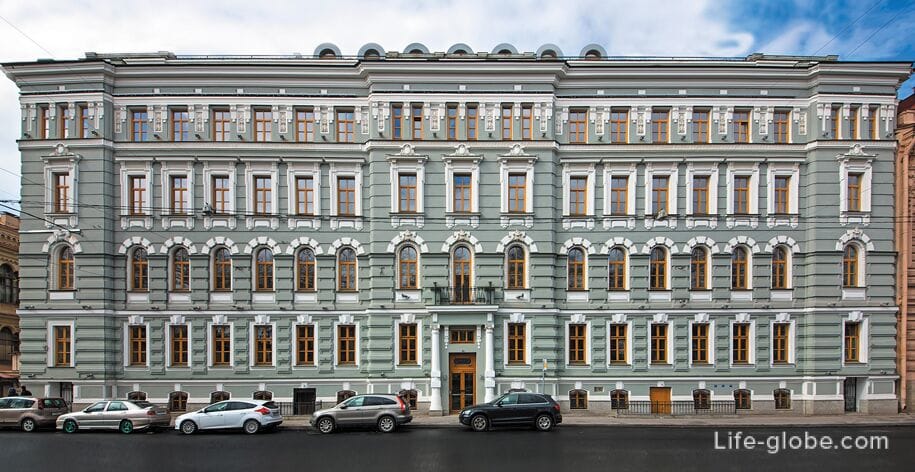
The house at number 7, known as the "House with Moors" - the former mansion of M. V. Kochubey, now an architectural monument.
In the middle of the 19th century, Prince Mikhail Viktorovich Kochubey purchased the land on which the house was located. In 1853-1857, the house was rebuilt in the early Italian Renaissance style according to the plans of the architect G. A. Bosse.
Near the facade of the mansion, facing Konnogvardeysky Boulevard, there is a metal grating decorated with busts of Moors, with faces made of black and turbans made of white marble. This appearance of the house, during its construction, made a real sensation in St. Petersburg. For this reason, the building is also called the "House with Moors".
In the 1860s, the house was purchased by the merchant Fyodor Rodokonaki. At his request, an extension of the 2nd floor of the wing was made, as well as an update of the interiors. The descendants of Rodokonaki owned the mansion until 1917.
After the revolution, the house was "nationalized" and passed into state ownership. During the Soviet era, various state institutions were located in the mansion.
Today, the interior of the former mansion retains some historical elements, including stucco decorations, caryatids, fireplaces, oak doors and plafonds.

The buildings numbered 4 and 6 are the former barracks of the Life Guards Mounted Regiment, erected in the early 19th century.
Russian Russian Vodka Restaurant and Museum is located in building No. 4. Its exposition tells about the history, forms and content of the Russian national drink. The visit to the museum ends with a tasting of the drink at high "standing" tables, from steamed faceted glasses under traditional snacks.
Museum website: muzey-russkoy-vodki.
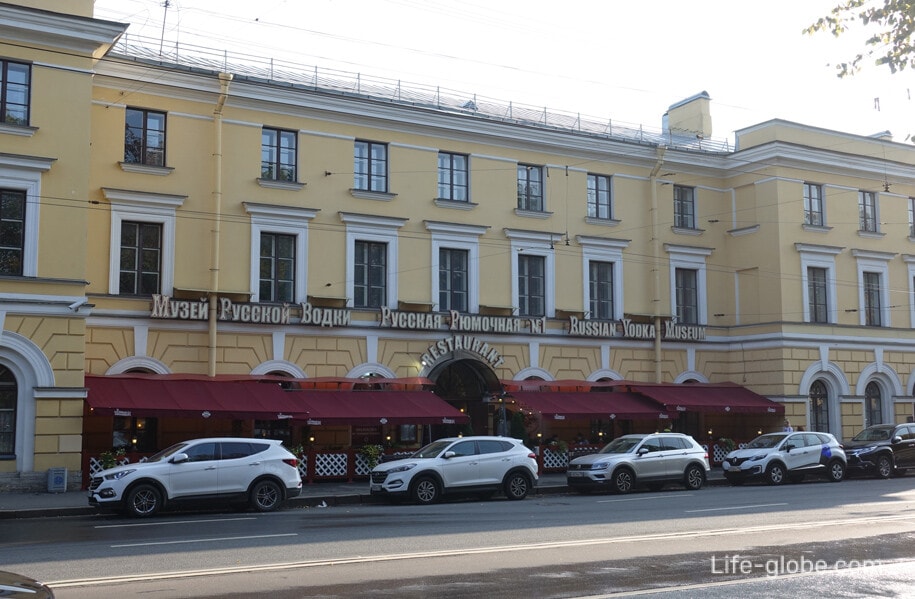

The building at number 17 is the former "Ginzburg Banking House", which in the Soviet years was called "Lenzhilniiproekt".
Baron Horace Osipovich Ginzburg in the 1870s-1880s was one of the richest people in the Russian Empire, who had several mansions in the city.

At number 21, with a monumental fence with an arched passage, there is now a restaurant.
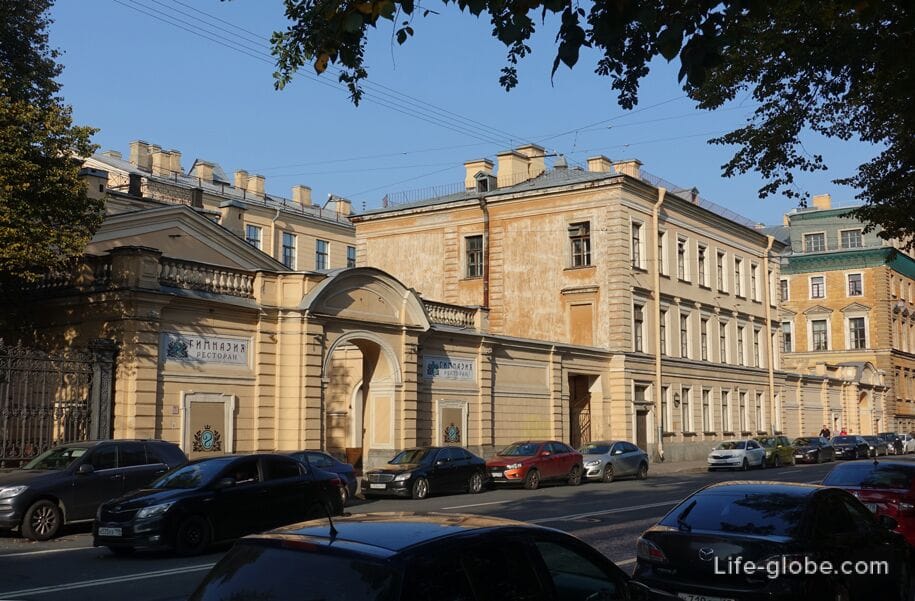
Corner building facing Konnogvardeysky Boulevard 23 and Labor Square-majesticNikolayev Palace (or Palace of Labor).
The palace was built by order of Emperor Nicholas I as a ceremonial residence for his third son, Nicholas.
The construction of the palace in the Neo-Renaissance style lasted from 1853 to 1861, designed by A. I. Stackenschneider.
At the palace there were: an arena, stables, outbuildings for servants and a church consecrated in the name of the icon "Joy of All who Mourn".
After the death of Grand Duke Nikolai Nikolaevich, in 1890, the Nicholas Palace was transferred to the Department of Estates for debts.
During the Soviet era, the palace was placed at the disposal of trade unions and has since also been known as the"palace of Labor".
During the Great Patriotic War, the palace housed a hospital. The building was seriously damaged by the bombing. It was later restored.
The building of the former palace is decorated with stucco, sculptural elements, pilasters and colonnades, and a spacious balcony is located above the front porch facing the Labor Square.
The palace hosts group tours, concerts, banquets, celebrations and seminars. During the New Year holidays, the palace hosts the "Royal Christmas Tree". Read more about the Nikolayev Palace with photos and website…

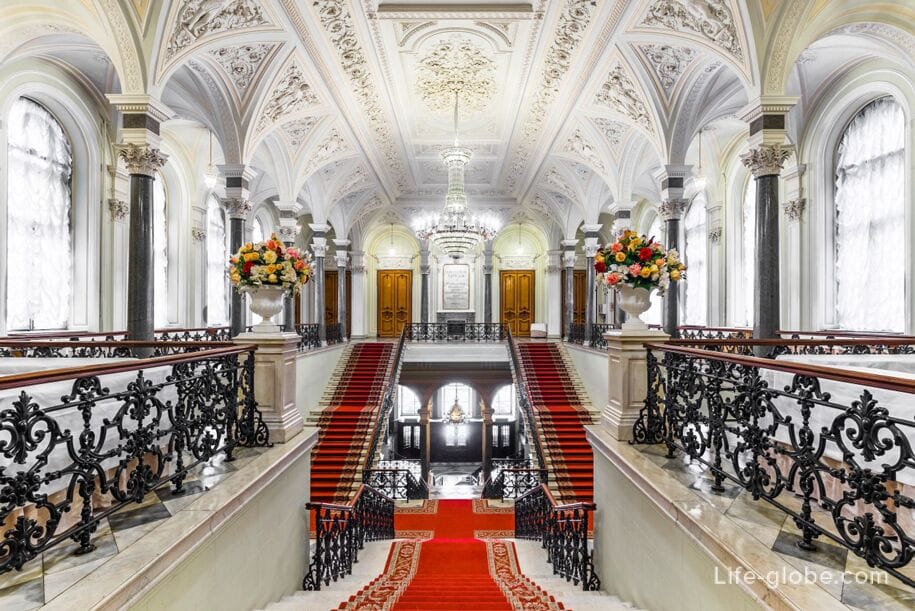
Konnogvardeysky Boulevard ends near the underground passageleading to the island of New Holland.
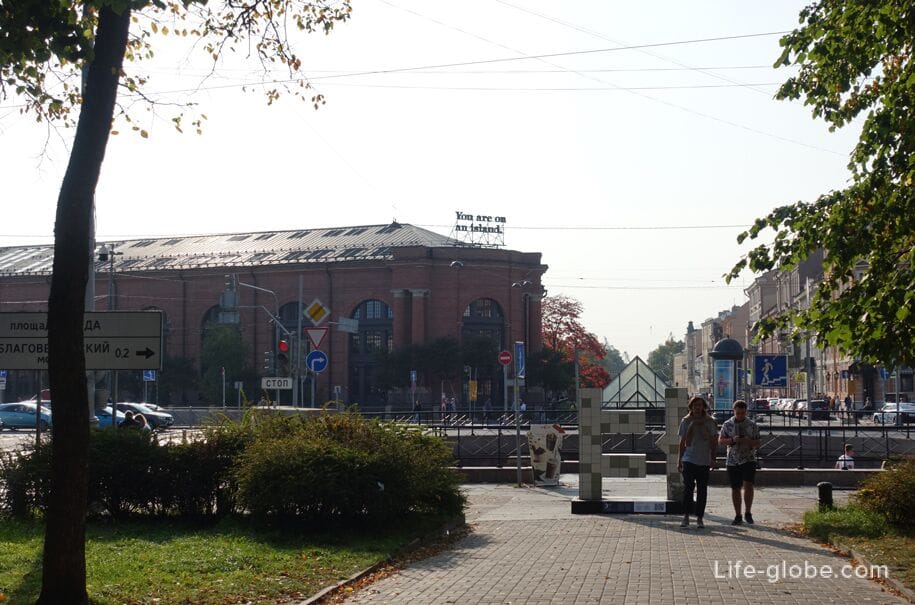
In the passage you can see two places with signs telling about where from 1717 to 1844 the Admiralty Canal passed, on the site of which is now Konnogvardeysky Boulevard.
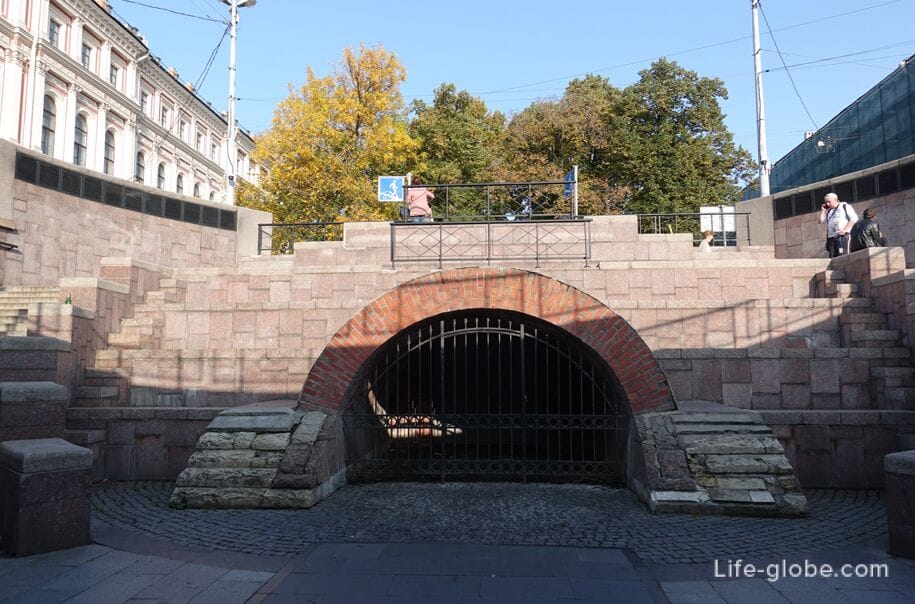
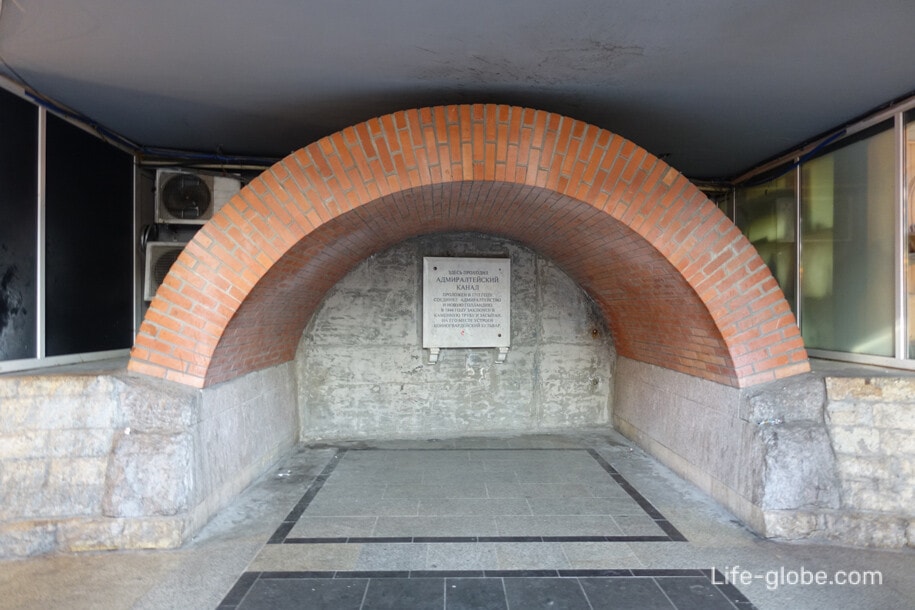
- apartment / apartment SaintHouse on Konnogvardeysky with 2 bedrooms, 2 bathrooms, a flat-screen TV with cable channels in each of the bedrooms, free Wi-Fi, a living room and a kitchen with a dishwasher, an oven, a microwave and a coffee machine. Link to the apartment

- Montferran Apartment features a bedroom, a flat-screen TV with satellite channels, an equipped kitchen with a dishwasher and a microwave, a washing machine, and a bathroom with a bidet. Link to the apartment
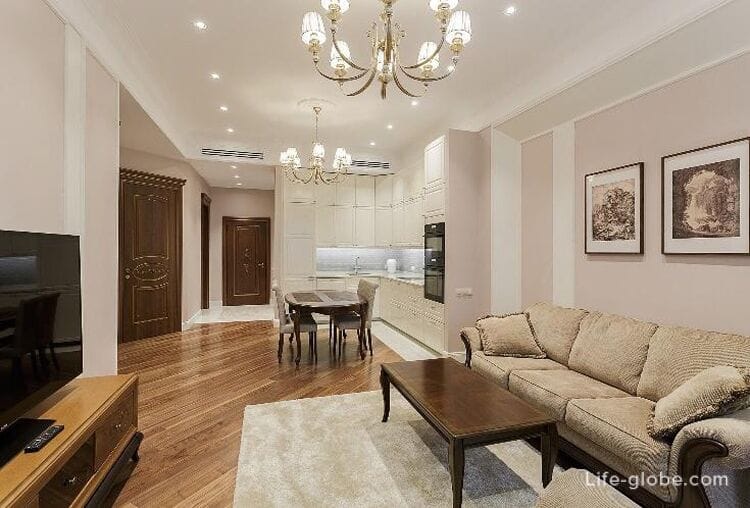
- Weekend Project K9 Apartment/apartment features air conditioning, free Wi-Fi, an equipped kitchen with a microwave, a dining area, a flat-screen TV with satellite channels, and a bathroom with a shower and a hairdryer. A refrigerator, stove, kettle and coffee machine are also provided. Link to the apartment
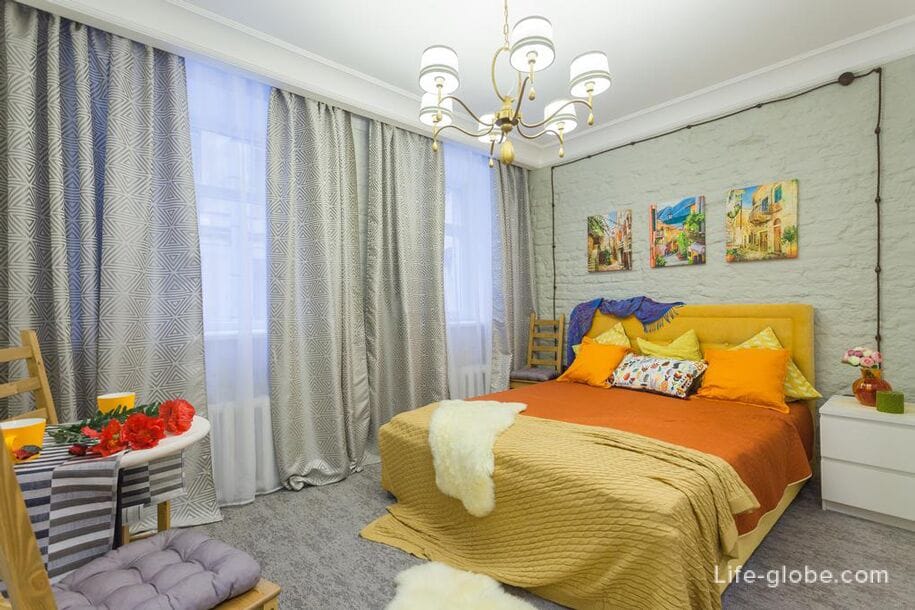
All accommodation facilities in St. Petersburg, including on Konnogvardeysky Boulevard and in the city center, can be viewed and booked here